The Kaizen Board - Always Evolving Obeya
Jul 28
/
Jim Benson
Improvement: It’s that thing we are all supposed to be doing continuously.
But we don’t. We can’t. We likely never will. But what we can do is create systems that help us improve as part of our daily work. It’s not a special case, it’s simply what we do every day.
In our last Obeya article, I shared our BubbleBahn, essentially our Kanban for our daily, non-conforming work. One of the reasons continuous improvement (Kaizen) or improvement at all is so difficult for most teams and companies to achieve is that it is almost always non-conforming work.
But we don’t. We can’t. We likely never will. But what we can do is create systems that help us improve as part of our daily work. It’s not a special case, it’s simply what we do every day.
In our last Obeya article, I shared our BubbleBahn, essentially our Kanban for our daily, non-conforming work. One of the reasons continuous improvement (Kaizen) or improvement at all is so difficult for most teams and companies to achieve is that it is almost always non-conforming work.
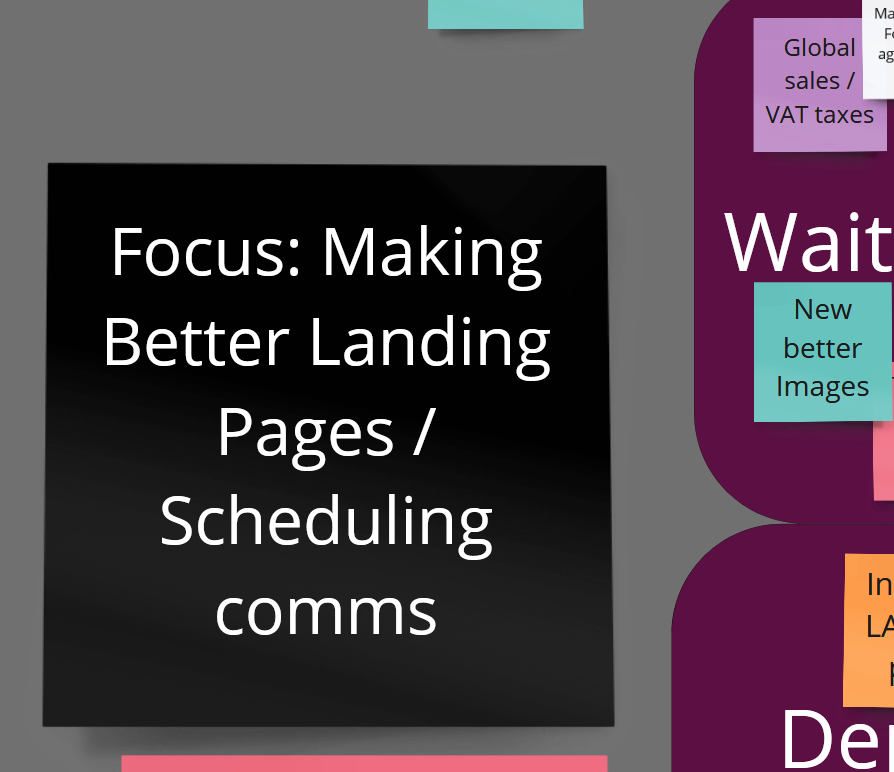
Improvement isn’t planned, it isn’t budgeted, it isn’t promised (except under duress), and therefore improvement is not valued.
In our BubbleBahn, we showed that each week or every few weeks, we set a goal and then focused on that goal.
The inputs to that goal include planned work (existing client needs, marketing plans, scheduled / optioned content creation) and Kaizen / improvement tasks.
In fact, and this might sound strange, in many weeks most of our work has been tasks that were identified on our Kaizen Board, that simply became necessary things to do in order to have an effective company.
The inputs to that goal include planned work (existing client needs, marketing plans, scheduled / optioned content creation) and Kaizen / improvement tasks.
In fact, and this might sound strange, in many weeks most of our work has been tasks that were identified on our Kaizen Board, that simply became necessary things to do in order to have an effective company.
The Kaizen Board
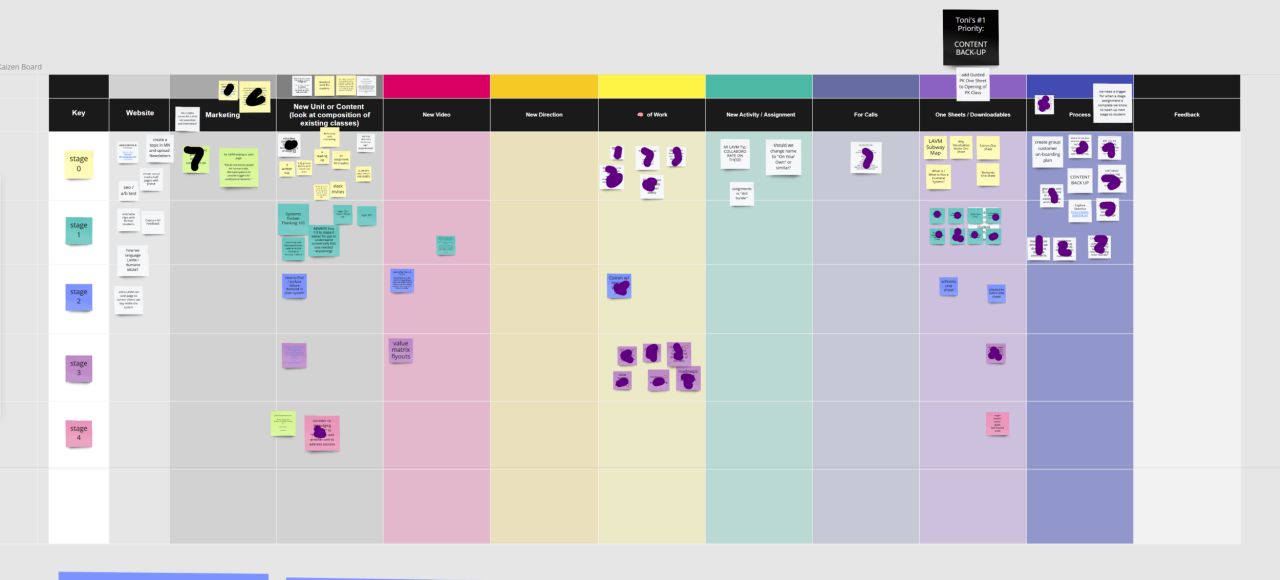
This is our somewhat redacted Kaizen Board.
The board itself is a work in progress, originally designed to capture the learnings for our signature LAVM Certification program, it and the space around it has grown to include improvements company-wide.
To provide focus, we can think of this as part of LAVM’s Roadmap Generator. Different things that have been caught that would improve the product or the experiences of students or instructors or operations are quickly placed in an appropriate column on the Kaizen board.
Often these relate directly to a stage, which have both a swim lane and a color. Things that are global are white. Things that need punctuation (see Toni’s at the top) are black.
The board itself is a work in progress, originally designed to capture the learnings for our signature LAVM Certification program, it and the space around it has grown to include improvements company-wide.
To provide focus, we can think of this as part of LAVM’s Roadmap Generator. Different things that have been caught that would improve the product or the experiences of students or instructors or operations are quickly placed in an appropriate column on the Kaizen board.
Often these relate directly to a stage, which have both a swim lane and a color. Things that are global are white. Things that need punctuation (see Toni’s at the top) are black.
Actionable and Human Readable
This means that improvements are no longer a big jumble in a database or random suggestions in a suggestion box. This means that the improvements sit, clearly in their context, surrounded by other improvements on the Kaizen board that can directly and immediately add value.
When we go to plan our upcoming work, this is where we go first. The immediate retrieval of latent value is a powerful tool. Every one of these so-called “improvements” is literally value that is currently available, but unrecognized.
When we go to plan our upcoming work, this is where we go first. The immediate retrieval of latent value is a powerful tool. Every one of these so-called “improvements” is literally value that is currently available, but unrecognized.
Fighting the Waste of Indifference
That unrecognized value is a new ninth waste for all you Lean waste-counters out there. In fact, I’ll name it right now:
Mukanshin - The Waste of Indifference
We all know that improvements are important, but they are rarely urgent. We skip one improvement in favor of something urgent, then another, then another, and soon we are indifferent to our own suffering and, by extension, the suffering of our customers, and soon we are simply indifferent to all problems globally.
They all become someone else’s domain, the world becomes that which we complain about, but do not improve. We become helpless, always awaiting salvation from a visiting consultant, a buyout, or perhaps we become content to live on in a jaded puddle of self-pity.
That sounds somewhat counter-productive to me.
We actively fight this very natural tendency toward the tolerance of Makushin by making sure that our Kaizen tasks are part of an active and evolving roadmap. We see our goals, we see what we are capable of, and we see what could potentially hold us back.
They all become someone else’s domain, the world becomes that which we complain about, but do not improve. We become helpless, always awaiting salvation from a visiting consultant, a buyout, or perhaps we become content to live on in a jaded puddle of self-pity.
That sounds somewhat counter-productive to me.
We actively fight this very natural tendency toward the tolerance of Makushin by making sure that our Kaizen tasks are part of an active and evolving roadmap. We see our goals, we see what we are capable of, and we see what could potentially hold us back.
Everything in the Right Place
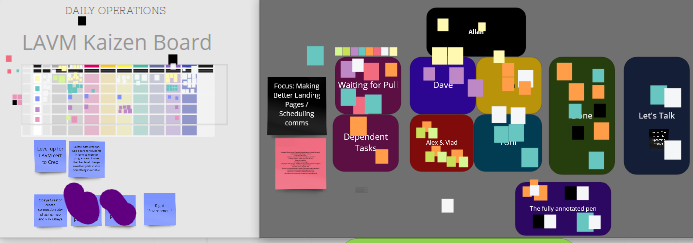
Again, the important thing is that these two visualizations are in the same always evolving Obeya. One place where we can go and deal with daily work, improvements, histories of recent work, conversations about evolving work items, and specific project work.
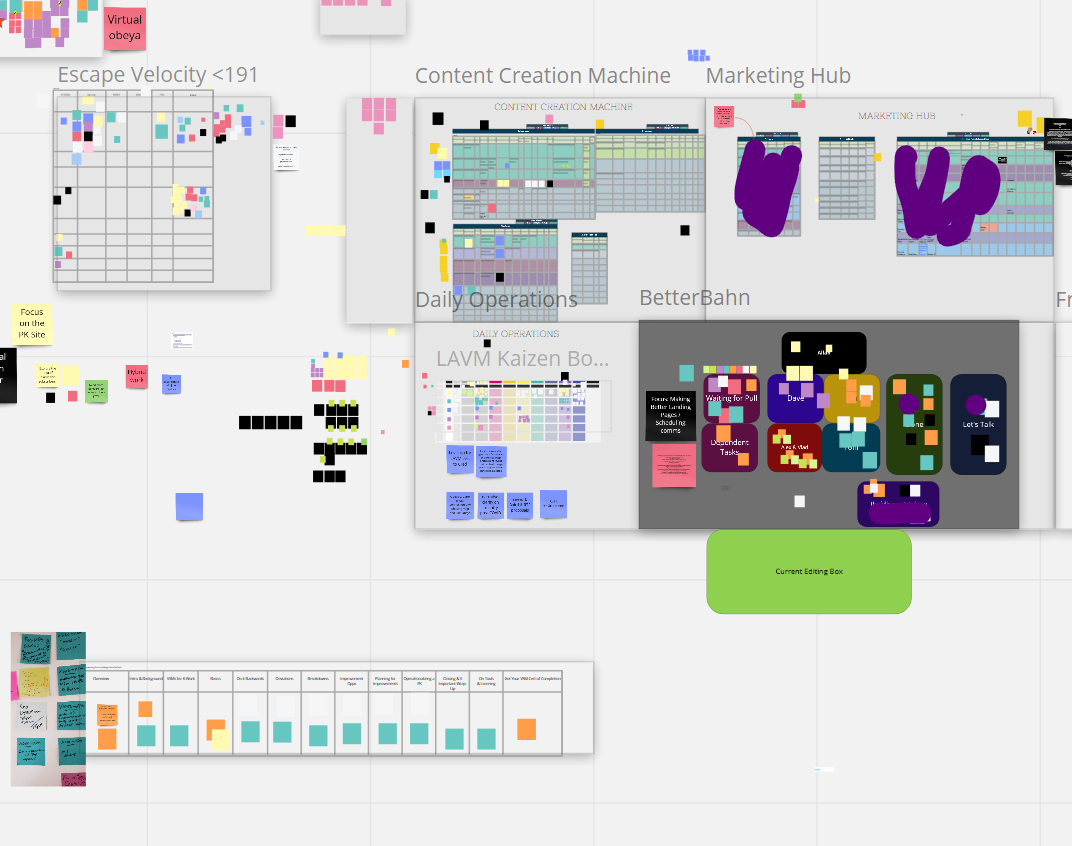
The entire Obeya contains visualizations of work that is highly standardized (standard work in Content Creation Machine and Marketing Hub), improvements, and work that is highly emergent (invention, creation, problem solving in BubbleBahn and the project boxes to the left / below and the new green “Current Editing” box). BubbleBahn and the specific improvement work (the Kaizen Board) are three constant parts of this work.
Seeing these together is crucial to the management of Mukanshin. When we can’t see the relevance of solving unrecognized value, we let improvements slide.
Seeing these together is crucial to the management of Mukanshin. When we can’t see the relevance of solving unrecognized value, we let improvements slide.

Out of Sight / Out of Mind
We need to see to act. We need the clarity of seeing the joint actions of our collaborators in one place. We, as professionals, process this information in two ways:
1. Action Triggers
The work we see others do is a joint-effort to deliver value we all understand. When we can see the successes and challenges of our colleagues, we can celebrate and act in real-time. We know more about the context of our own work, we know how we can help others, and we are reassured that progress is being made.
2. Professional Space
When we build a strong internal narrative of our work (what we are doing, for whom, why, what we are learning, what we need), professionals on our team no longer need to sit and think / worry about the answers or the differences in their answers with their peers. This shared understanding of work is, again, reassuring, which gives professionals more cognitive capacity to deal with real problems.
In The Obeya
In the Obeya, it’s not just that we’re tracking improvements in some overly-detailed software, we’re recognizing (seeing) that we create value every day and these issues routinely and sometimes catastrophically limit how effective we can be. This value is now visible. It has one location. It is easy to see improvements on the Kaizen board right along with other roadmapped or programmed plans.
When we select upcoming work, improvements become just another piece of the puzzle for our professionals to select the right work at the right time.
When we select upcoming work, improvements become just another piece of the puzzle for our professionals to select the right work at the right time.
This is What We Do 🥰 - Come Join
If these ideas are interesting, you should check out our Lean Agile Visual Management (LAVM) Program.
Our primary goal is to help people work together in more visual, aligned, and supportive ways. Take a look or chat with us.
The world seriously needs people who can do this.
Our primary goal is to help people work together in more visual, aligned, and supportive ways. Take a look or chat with us.
The world seriously needs people who can do this.
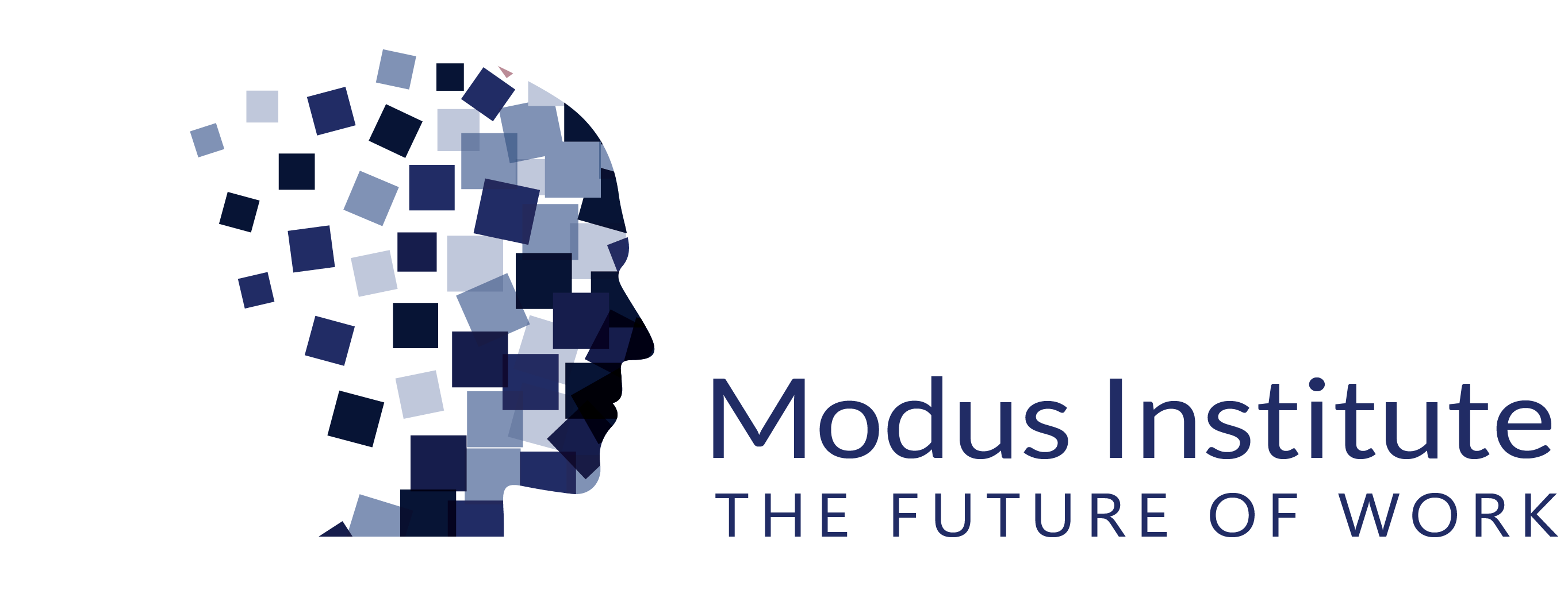
We are an online educational platform that helps professionals and aspiring individuals to succeed in their goals.
Featured links
Copyright © 2024